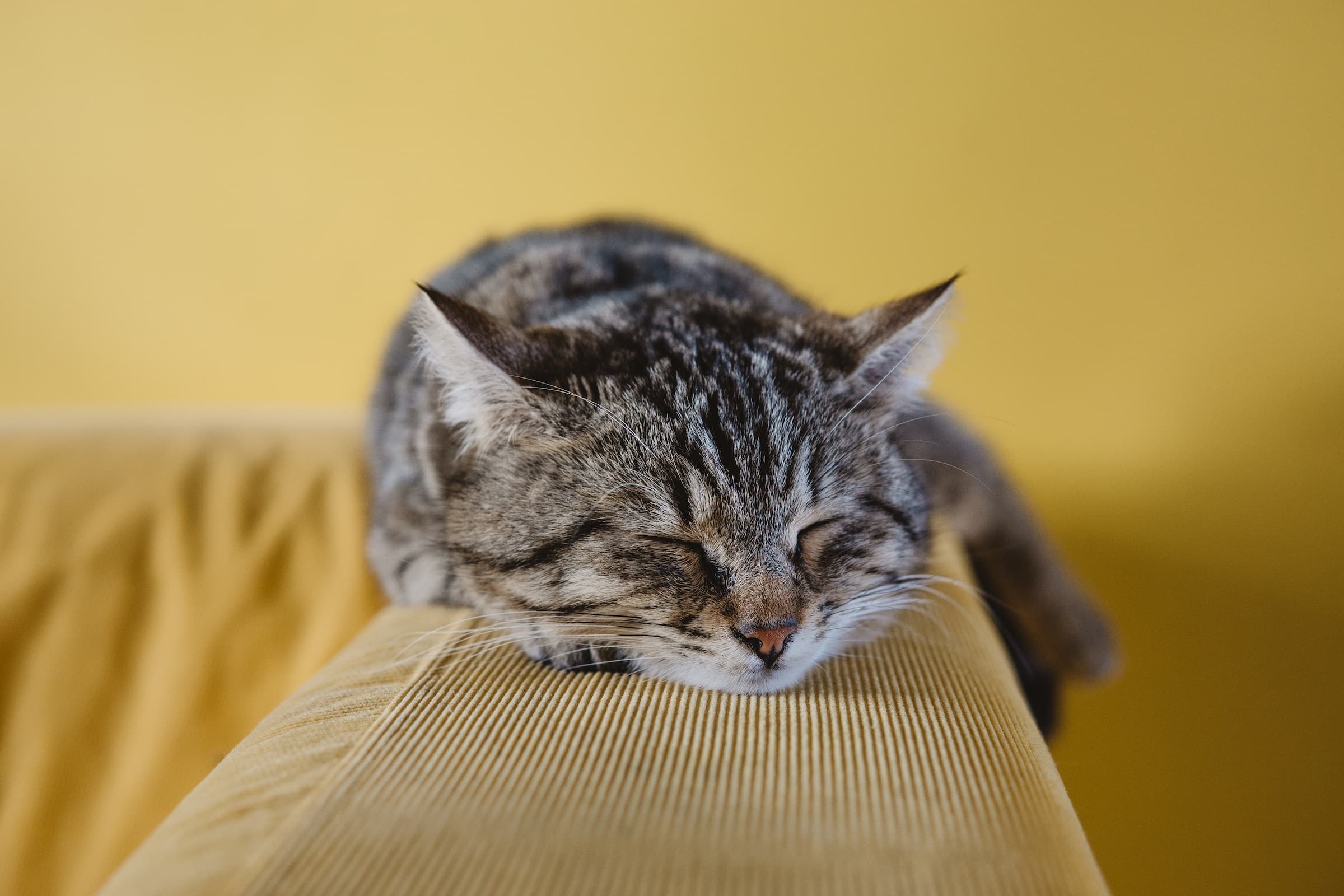So, your cat twitches and makes weird sounds when sleeping, and you wonder, “Do cats dream?” Cats sleep more than 15 hours a day and often even more. It is possible that with so much sleep, they have dreams like humans do.
A study by Michel Jouvet explained that cats also experience the REM phase in their sleep, so they probably dream like we do. Jouvet proved that they enter REM sleep as he discovered low-voltage electrical activity in the cats’ brains, twitching of eyes, and a loss of muscle tone (atonia).
Now, based on this study, cats can have dreams. Let's have a deep dive into the dream realm itself or when dreams occur.
What Do Cats Dream About?
You see your cat moving their paws in sleep and know they are dreaming. But what do they dream about? There is no way you can know what the dream is about. However, it has been established that cats' brains work the same way as humans’ while sleeping. So, they likely also dream about the events and people in their lives like we do.
Similarly, they may dream of things that happened that day or in the recent past. The dream can be about hunting a mouse or anything that happened with another animal or other people.
Do Cats Dream About Us?
Cats probably dream about their everyday life and the people around them the same way as humans do. And so, they may dream about us. They are likely asking for food from you in their dream, messing with you, or snuggling with you.

Can Cats Have Bad Dreams?
Often, when you see your cat squeaking or twitching in sleep, you wonder, “Can cats have nightmares?” Well, they may experience nightmares because when cats suddenly wake up and are frightened, they may have a bad dream.
Cats with traumatic pasts can have bad dreams, or they may relive negative memories of the day in their sleep. Also, you shouldn’t wake your cat even if it looks like they are having bad dreams.
When Do Dreams Occur?
Most dreams typically occur in the REM stage of cats' sleep cycle, which is 90 minutes after you fall asleep, and it can last between ten minutes to an hour. During this phase, the brain receives signals important for memory and learning. However, some signals are random. The brain analyzes these signals, puts them together, and creates a story or a dream.
The Cat’s Sleep Cycle
The cat’s sleep cycle comprises two stages that are rapid eye movement (REM) and deep sleep.
REM Sleep
Rapid eye movement (REM) sleep in cats was found in the 1960s. In this phase, breathing and heart rate become faster, and eyes move quickly in different directions. It's the REM phase of the sleep cycle, where the cats mostly dream. You would notice certain behaviors, such as twitching their eyes and ears or moving their paws. They may also lose muscle tone and this is called atonia. Household cats can take up to three to eight hours of REM sleep per day.
Deep sleep
Deep sleep takes place the rest of the time your cat is sleeping. You must let them sleep as much as possible because this stage helps rebuild and repair their body. Also, you should provide them with cozy and quiet places where they can feel secure and go into the deep sleep phase.
Cat Sleep Behavior
According to an article by PetMD, cats sleep up to 18 hours or more a day. What is more interesting is they sleep in different positions. Some of their sleeping behaviors emanate from social dispositions, for instance, your cat sleeping with you or on you, and the other positions may be derived from their wild origins where they sleep curled up to stay attentive to their surroundings.
Cats don’t always sleep quietly; you may see them stretch, twitch, snore, or squeak. These movements and sounds are related to REM sleep in cats, which is much the same in humans while in dreamland.
Conclusion
Cats are infamous nappers, but these snoozes are essential for their health and well-being. With the amount of naps cats take, it is plausible that they may also dream like other mammals, and by recognizing their sleeping behaviors, you can keep a check on them and their health.
Frequently Asked Questions
Do cats have nightmares?
When cats wake up suddenly with their paws moving and appear discomforted or scared, they may have a nightmare. Why do cats twitch in their sleep?
You may have seen your cat twitching in sleep, and it may look like they are having nightmares. Mostly, it is nothing to be concerned about because they are in REM sleep, where they may dream.
Should you wake your cat if they are twitching?
You should never wake your cat if they are twitching because all the stages of sleep are important for the animal’s wellbeing.
Why do cats sleep all the time?
Cats’ sleeping schedules stem from years of evolution because wild cats need about 13-16 hours of sleep a day to save energy for hunting.
Can cats dream?
Since cats can enter REM sleep like humans, it is possible that they can dream just like we do.



